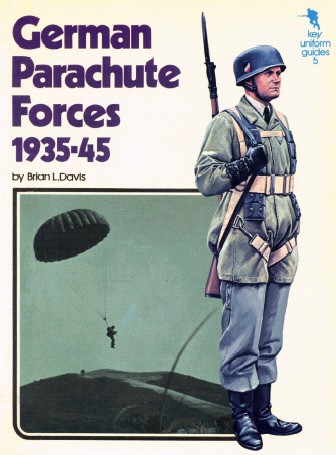
PAD YOUR LOWER LEGS & ELBOWS!

Just when we begin to eliminate ankle injuries via Parachute Ankle Braces (PABs), some are complaining of possible bone breaks higher up on the leg. We need to jump smarter here troopers! When we jump, we must also pad the lower legs with some smart placement of TA-50 items--like using flexible, soft 1-quart canteens.
KNEE/ELBOW PADDING


First wear kneepads, black issue kneepads, facing sideways and out to protect the lower leg and knee where the boots and PABs stop. The German Paratroopers did it in WW2 so don't let any AmeroNazi try to brow beat you out of using common sense. If in a dumbed-down, harassment environment like U.S. Army jump school, wear knee pads underneath your BDU/ACU trousers so you don't get macho-stupid talk for being smart. You can cut pieces of an unused part of a sleeping mat and insert them into your BDU trouser knee and elbow reinforcements by cutting a small slot from the inside, fold the pad, insert then flatten once inside. Army Combat Uniforms (ACUs) already come with knee and elbow pad pockets thanks to behind-the-scenes lobbying by the 1st TSG (A).

An excellent ACU pocket padding that is BALLISTIC PROTECTIVE is available from TACARM.
www.youtube.com/user/tacarmUSA
www.youtube.com/watch?v=xjcKxXofXYw
Matt: tacarm@aol.com
(910) 672-0027
UPPER LEG PADDING
Fill your BDU/ACU trouser side pickets with soft TA-50 you have to carry anyway....to protect your legs in event of a hard landing. The nylon kit bag (not the cotton one) will fit into the BDU side trouser pocket instead of cluttering the parachute harness under leg straps. The kit bag hinders exiting the harness in a combat/water landing and may have contributed to several parachute drowning deaths. A T-21 parachute should have a place to store the kit bag away from the leg straps, and have split saddle construction so no discomfort padding is needed.
Cotton kit bags can be better stowed in an outer rucksack pocket than under the parachute harness and the PABs exchanged during air item recovery. On the outer leg pocket place your patrol cap and gloves. This will pad both of your legs. After the jump, (leaving or recovering air items) donning the rucksack, the gloves can be put on.

The space emptied from the BDU/ACU trouser pocket, by the kit bag being used to recover air items and the gloves put on can be used to hold the hook, pile tape lowering line (HPTLL) quickly removed from the rucksack by using a snaplink to the Harness, Single-Point Release (HSPR "X" instead of a girth hitch knot. The snaplink is clipped to the LBE to recover rifle/carbine magazines with 550 pull-carry cord loops. The HSPR D-ring attaching straps can also be put in the side BDU/ACU trouser pockets or the PABs, though I suggest keeping an outer pocket of the ALICE or MOLLE rucksack empty or keep the kit bag there for exchange with PABs.
The 82nd Airborne Division Airborne SOP should be amended to remove the kit bag from under the leg parachute harness straps and placed into either an outer rucksack pocket or if nylon a BDU/ACU side trouser pocket. The wear of PABs, knees pads and soft items in BDU/ACU trouser pockets should be encouraged. The use of the snap-link as a quick-release of the HPTLL from the ruck should be authorized.
FEEDBACK!

HIT BROWSWER BACK BUTTON TO RETURN TO PREVIOUS PAGE RETURN TO AES HOME PAGE